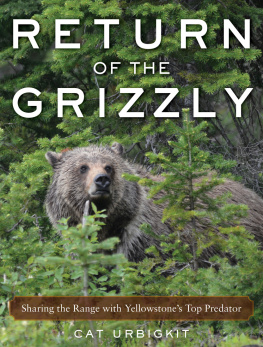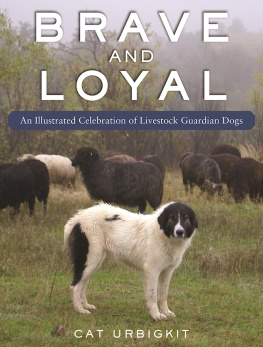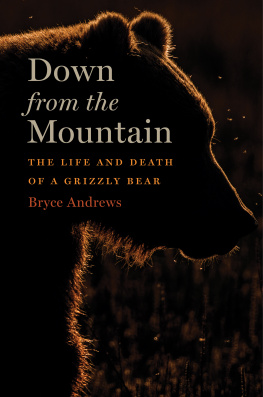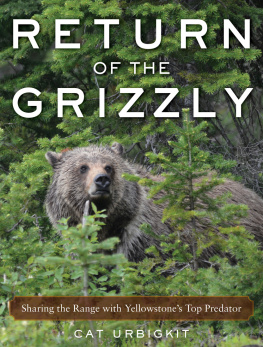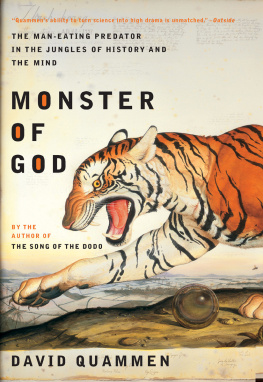2015 by the University Press of Kansas
All rights reserved
Published by the University Press of Kansas (Lawrence, Kansas 66045), which was organized by the Kansas Board of Regents and is operated and funded by Emporia State University, Fort Hays State University, Kansas State University, Pittsburg State University, the University of Kansas, and Wichita State University
Library of Congress Cataloging-in-Publication Data
Van Nuys, Frank, 1961
Varmints and victims : predator control in the American West / Frank Van Nuys.
pages cm
Includes bibliographical references and index.
ISBN 978-0-7006-2131-6 (hardback)
ISBN 978-0-7006-2168-2 (ebook)
1. Predatory animalsControlWest (U.S.) 2. Predatory animalsControlGovernment policyWest (U.S.) 3. WolvesControlWest (U.S.) 4. CoyoteControlWest (U.S.) 5. LionControlWest (U.S.) 6. Grizzly bearControlWest (U.S.) I. Title.
SF810.6.U6V36 2015
591.530978dc23
2015026515
British Library Cataloguing-in-Publication Data is available.
Printed in the United States of America
10 9 8 7 6 5 4 3 2 1
The paper used in this publication is recycled and contains 30 percent postconsumer waste. It is acid free and meets the minimum requirements of the American National Standard for Permanence of Paper for Printed Library Materials Z39.48-1992.
ACKNOWLEDGMENTS
Among the most impressive aspects of the antipredator campaigns in the West, in both general terms and for the first decades of centralized federal management (beginning in 1915 ), are the stupendous amounts of data and description to be found in government records. One should never underestimate the sheer tonnage of reports and statistics that bureaucrats of any historical period generate. The National Archives in College Park, Maryland, houses the bulk of the federal governments predator control materials. In addition to six boxes of annual reports from 1916 to 1964 , with attendant data sheets and progress reports, this repository holds more than ninety boxes of monthly, quarterly, and annual reports from district inspectors in all the states and regions included in the predatory animal and rodent control system, and that is just for 1915 to 1949 . State game and fish wardens reports, personal papers of important participants, records associated with cooperating bodies such as livestock associations, newspaper and magazine stories, memoirs, and much moreconsidering these all together, it becomes clear that historians can only hope to create an effective narrative about western predators and predator control based on a very selective sampling of official records and additional supporting accounts. Added to that is the immense amount of information contained in decades of scientific journals and, lately, the torrent of advocacy for or against predator recovery or hunting found on web pages and blogs. It is simply staggering.
I would have been truly staggered without the help of many professionals, colleagues, friends, and family members. Staff at the following research repositories, beleaguered as they are by shrinking budgets and legislative neglect, well deserve any plaudits that come their way: the aforementioned National Archives; the Smithsonian Institution Archives in Washington, DC; the Western History Collections at the Denver Public Library; the Minnesota State Historical Society library and archives in Saint Paul; the New Mexico State Records Center and Archives in Santa Fe, particularly Melissa Salazar and Felicia Lujan; the Nebraska State Historical Society in Lincoln; the Kansas State Historical Society in Topeka; Carl Hallberg and his associates at the Wyoming State Archives in Cheyenne; the American Heritage Center in Laramie, Wyoming; and finally, just a short walk across the quad from my office, the South Dakota Collection, housed at Devereux Library on the campus of the South Dakota School of Mines and Technology. Colleagues at the library, especially director Patty Anderson, Dawn Jedrykowski, and interlibrary loan wizard Josh Wilkinson, have been extraordinary. Josh has been invaluable in rapidly turning my floods of requests into resources in my hands or on my computer screen.
An important contribution to securing photo prints from the National Archives for this book came from Photo Response Studio in Gaithersburg, Maryland. Others who went to great lengths to assist with images include Riche Sorensen at the Smithsonian American Art Museum in Washington, DC; Debra Guernsey at Yellowstone National Parks Heritage and Research Center; Reid Riner, director of the Minnilusa Pioneer Collection at the Journey Museum in Rapid City, South Dakota; Valerie Fellows with the US Fish and Wildlife Service; Becky S. Jordan with Special Collections/University Archives at Iowa State University in Ames; Letha E. Johnson with the University Archives at the Kenneth Spencer Research Library at the University of Kansas in Lawrence; David Null and Vicki L. Tobias from the University of WisconsinMadison Archives; Crystal Miles at the Bancroft Library at the University of CaliforniaBerkeley; and John Kanta from the South Dakota Game, Fish and Parks Department in Rapid City.
Being surrounded by amazing colleagues on the Humanities and Social Sciences faculty is a daily blessing, and I want to thank all who, whether able to read one or all of the chapters or simply inquire into how things were proceeding, helped immeasurably with editing, comments, and encouragement: King Adkins, Al Boysen, Roger Dendinger, John Dreyer, Michael Hudgens, Sharon Kirkpatrick-Sanchez, Jim McReynolds, Deb Mitchell, Kayla Pritchard, Rod Rice, Judy Sneller, and Christy Tidwell. Kate Antonen and Sue Shirley deserve special thanks for reading and expertly editing the entire manuscript. Eternal gratitude goes out as well to Deb East and Debbie Zeidler, who tracked down answers to my questions about financial issues and other administrative details. I also want to extend my appreciation to former School of Mines provost Duane Hrncir for finding a few dollars here and there during tight budget regimes to help fund travel to a conference or archive. Colleagues and mentors on other campuses or in nonacademic settings gave great advice and support too, and I would like to single out David Cremean, John Egan, Jeremy Johnston, and Phil Roberts in this regard. By alerting me to a call for contributors to an interdisciplinary collection of essays on hunting and fishing traditions, John Bruni helped immeasurably in pushing me toward this project several years ago. For providing opportunities to share my research and gather feedback in public presentations, I want to commend Karen Miller, Reid Riner, and other fellow members of the Minnilusa Historical Associations board of directors.
For providing research support, I am indebted to the American Heritage Center on the campus of the University of Wyoming for a travel grant in 2006 ; Stella Hughes and the William and Stella Hughes Faculty Research Award, offered through the South Dakota School of Mines and Technology Foundation in 2011 2012 ; and a John Topham and Susan Redd Butler Faculty Research Award, provided by the Charles Redd Center for Western Studies at Brigham Young University, for 2013 2014 .




